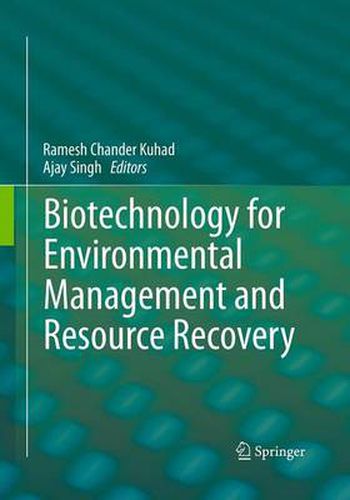Readings Newsletter
Become a Readings Member to make your shopping experience even easier.
Sign in or sign up for free!
You’re not far away from qualifying for FREE standard shipping within Australia
You’ve qualified for FREE standard shipping within Australia
The cart is loading…






Various types of secondary agriculture and forestry wastes represent valuable resource materials for developing alternate energy as biofuels and other value added products such as sugars, phenols, furans, organic acids, enzymes and digestible animal feed etc. However, if not managed properly, waste material and environmental contaminants generated by various industries such as food and feed, pulp and paper and textile may lead to severe environmental pollution. The energy, food and feed demand necessitate developing simple and economically viable technologies for environmental management and resource recovery. Microorganisms and their enzymes contribute significantly in utilization of plant residues, resource recovery and eventually in pollution mitigation.
Biotechnology for Environmental Management and Resource Recovery presents a comprehensive review of selected research topics in a compendium of 16 chapters related to environmental pollution control and developing biotechnologies in agro-ecosystem management and bioconversion of agro-residues (lignocellulosics) into biofuels, animal feed and paper etc. This book provides a valuable resource for reference and text material to graduate and postgraduate students, researchers, scientists working in the area of microbiology, biotechnology, and environmental science and engineering.
$9.00 standard shipping within Australia
FREE standard shipping within Australia for orders over $100.00
Express & International shipping calculated at checkout
Various types of secondary agriculture and forestry wastes represent valuable resource materials for developing alternate energy as biofuels and other value added products such as sugars, phenols, furans, organic acids, enzymes and digestible animal feed etc. However, if not managed properly, waste material and environmental contaminants generated by various industries such as food and feed, pulp and paper and textile may lead to severe environmental pollution. The energy, food and feed demand necessitate developing simple and economically viable technologies for environmental management and resource recovery. Microorganisms and their enzymes contribute significantly in utilization of plant residues, resource recovery and eventually in pollution mitigation.
Biotechnology for Environmental Management and Resource Recovery presents a comprehensive review of selected research topics in a compendium of 16 chapters related to environmental pollution control and developing biotechnologies in agro-ecosystem management and bioconversion of agro-residues (lignocellulosics) into biofuels, animal feed and paper etc. This book provides a valuable resource for reference and text material to graduate and postgraduate students, researchers, scientists working in the area of microbiology, biotechnology, and environmental science and engineering.